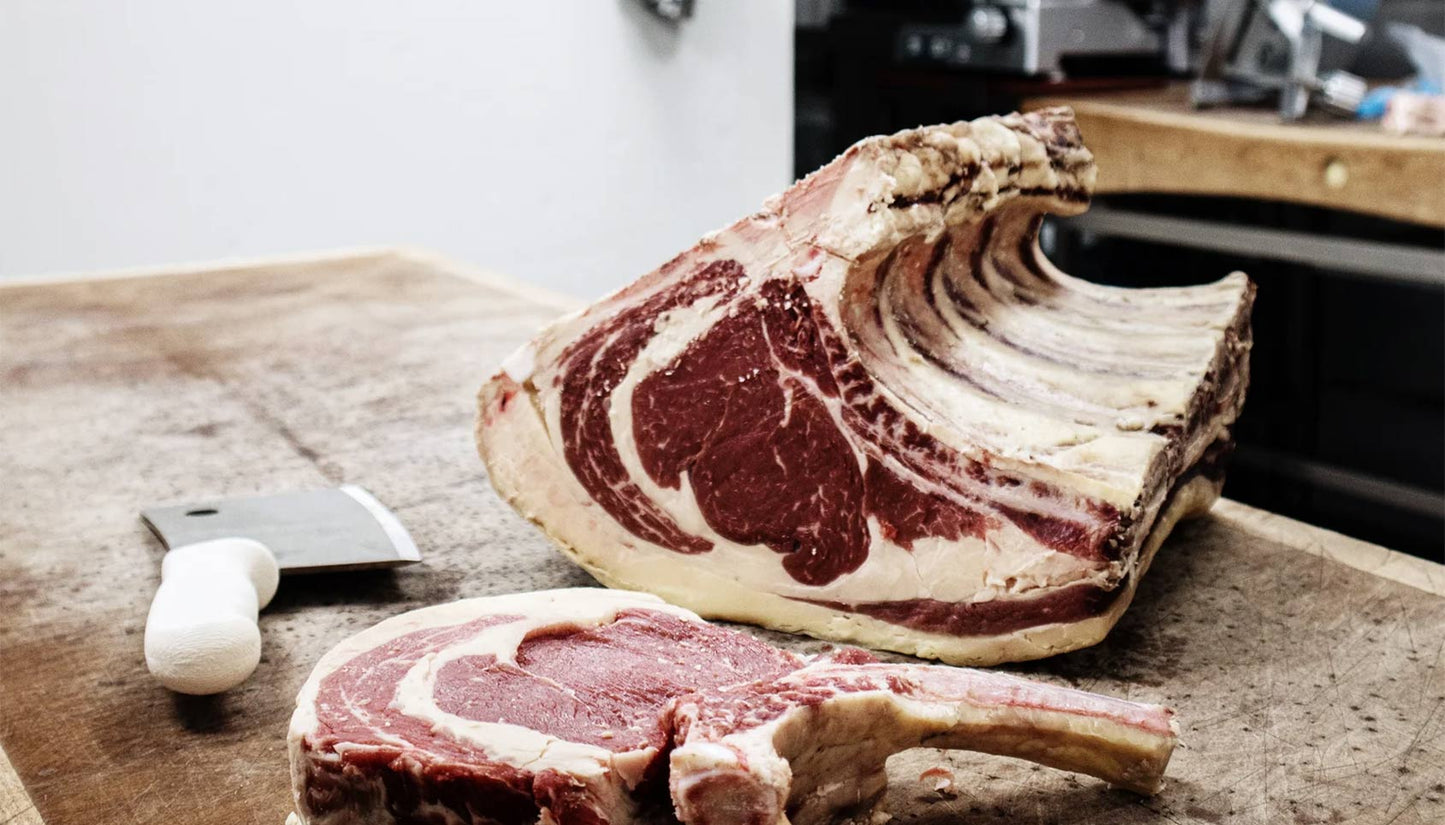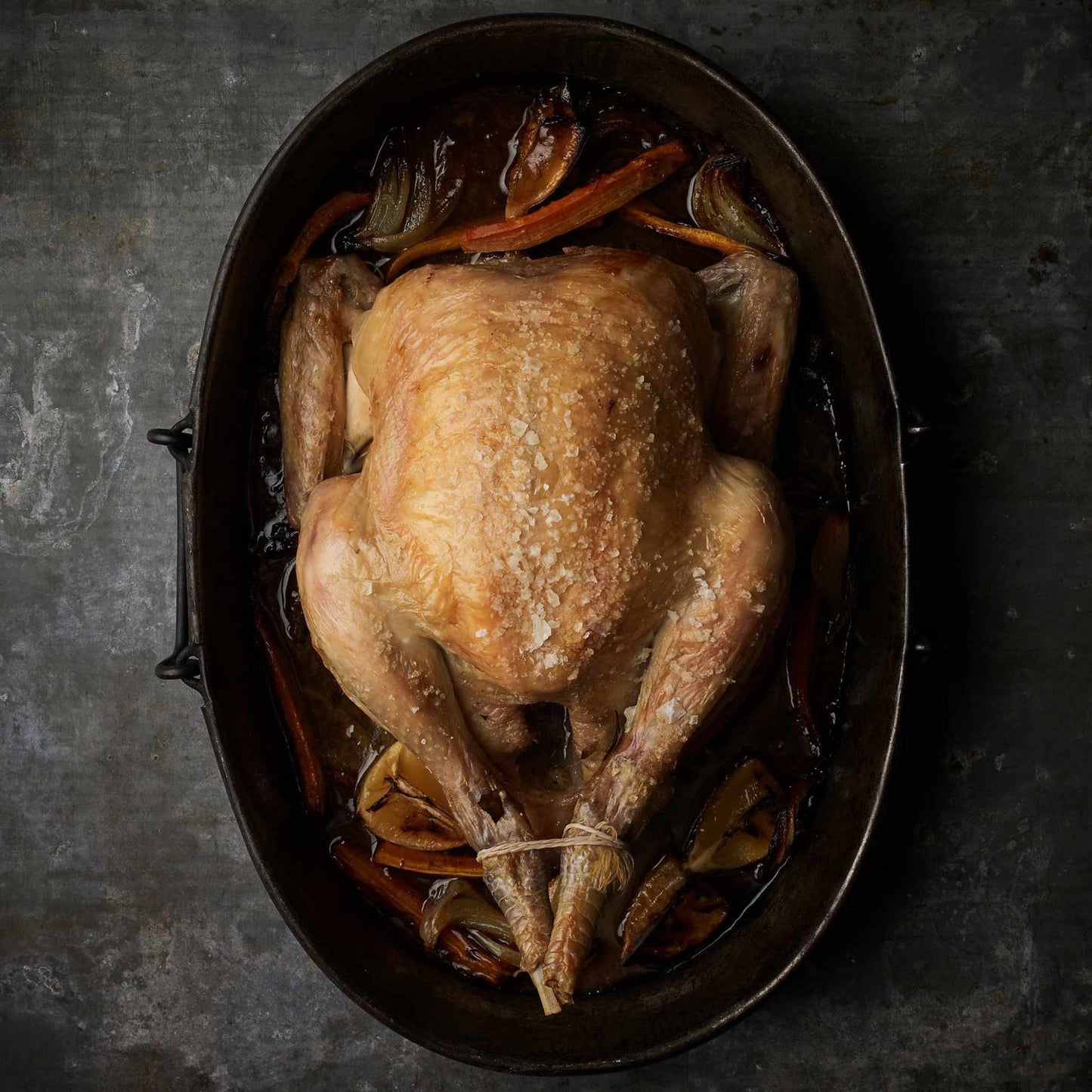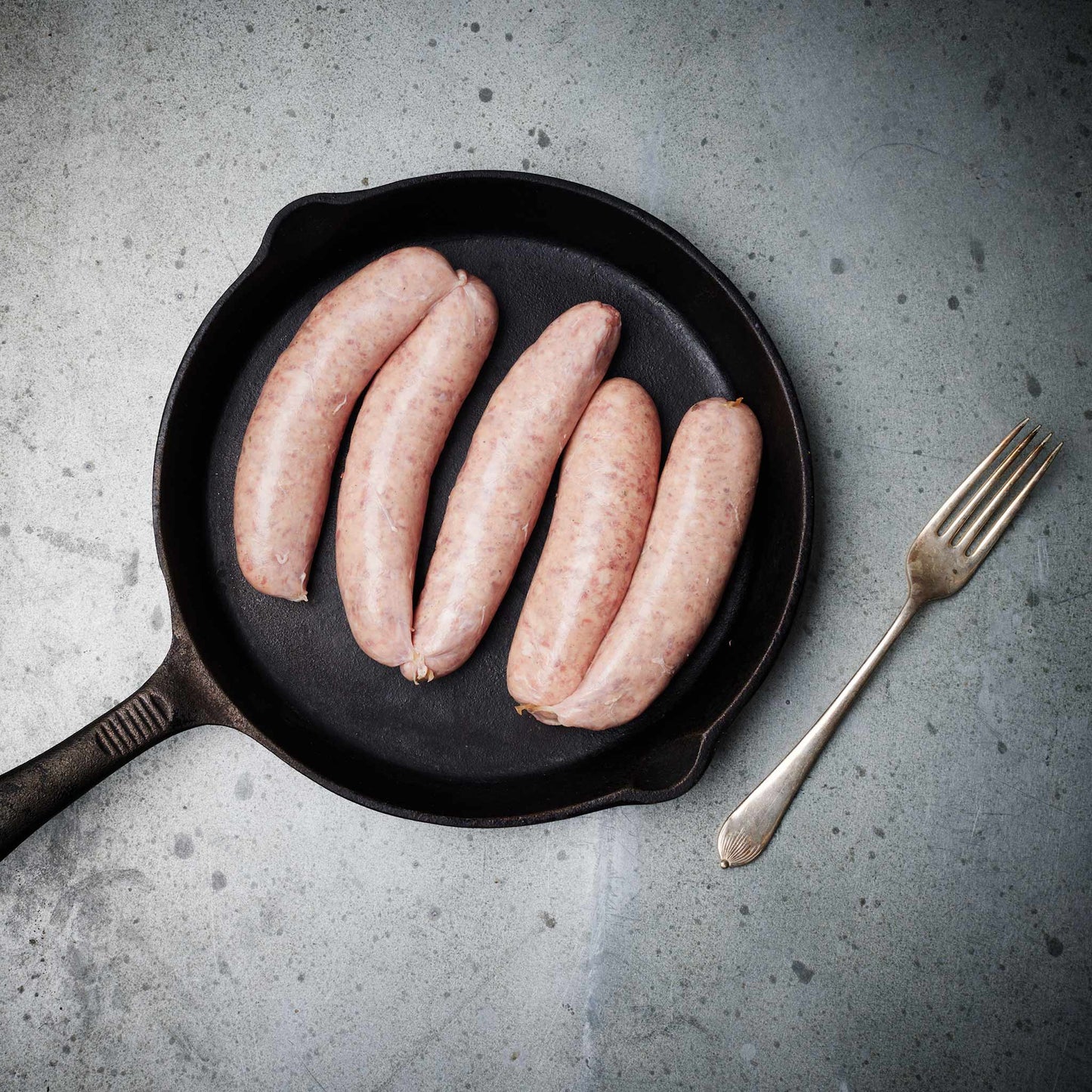We source our chicken from one farm in Leicestershire. The farm is Pasture for Life certified and rears truly free range, outdoor birds.

In northern Spain it could be argued that they know what they're doing when it comes to food. The town of San Sebastián is home to 11 restaurants with Michelin stars, this is in a town about the size of Reading. Let that sink in.
Food percolates through the culture and history of the place, the town sits at the convergence of where land and sea meet both brimming with vitality and the finest produce available. The climate of San Sebastián is temperate oceanic, with mild, rainy winters and quite cool summers meaning it is cool mild and very green, a bit like the west of the UK.
Needless to say the beef is also considered to be some of the best in the world but the animals they eat are quite different to the ones we consume here.
Anyone talking about beef of the highest quality in this part of the world isn't interested in the 20-30 month old youngsters that we favour but the retired ex-dairy cows that can be as old as 15 years, these older cattle have meat that is a deep almost purple in colour with rich yellow fat from the concentrated plant compounds that the animal has eaten.
This area is famous for producing cheeses from goats and cows milk, sometimes combined as with the oldest cheese in the region called Saroi which is made from a mix of cows and sheep milk, this dairy industry drives the availability of ex-dairy animals for meat.
From The Steak Society's website:
Old Cows
There’s a prevailing view that the best beef comes from young cows. This view is so deeply held that the United States that the USDA (United States Department of Agriculture, which grades beef) will not give beef a prime grading (the top grading) unless it is from a cow under 30 months of age.
Meat from younger cows has been considered superior to meat from older cows because it is thought to be healthier and more tender. Until a couple of years ago, I held the same view: the idea of an old cow would bring images of a chewy and stringy steak from a decrepit cow. It wasn’t until I tried beef from a more mature cow that I realised how incredible old cow steak was.
The gateway steak
My gateway steak to what is now an overall preference toward mature beef was an outstanding Txuleton (Rib) steak from the Rubia Gallega cow (more details on this breed below). The beef isn’t exactly melt in the mouth tender, but the taste is fantastic. Every bite of this steak delivered a punch of intense beef flavour. It was heaven and I needed more.
Why do old cows taste so good?
As the cow ages both the muscle and fat mature which increase the taste of beefiness. In his book, STEAK: one man’s search for the World’s best steak, the author Mark Schatzker, explains that as cattle get older they develop more Myoglobin (a protein that stores oxygen) in their muscles resulting in redder and more flavourful meat. Other factors are the diet of the cow (grass/pasture fed) and the way the steak is cooked (with the traditional method to cook the meat at 800 degress in a Josper oven).
No Country for Old Cows
The beef from the Basque area, including the Txuleton/Chuleton cut (a rib steak), is from former dairy cows that are finished (fattened up for slaughter) in the Basque area or, ideally, from the Galician Blond (Rubia Gallega) cow breed.
Great, but why are we talking about beef from Spain?
This beef from Spain is considered by many to be the finest in the world and we can produce this type of beef in the UK from our organic ex-dairy that thrive on the wetter pastures of the west of the UK and Ireland.
Right now, most dairy cows are sold into the commodity market when they're “retired.” Their meat is primarily turned into low-quality ground beef, the kind you'd find in a cheap frozen or fast food burger, this is because after years of milk production in an intensive system their bodies are 'out of condition' which means they are not in the same shape that we demand from our regular much younger beef cattle.
The Northern Spanish cows are less intensively produced meaning they are pasture fed and are not expected to produce the same high volume as a conventional system, also, because the meat is valued they are given a year on pasture as 'retirement' to gain back some muscle as they are not lactating, this is what makes the superb meat.
The difference between organic grass fed and conventional
It's worth looking at the differences in nutritional quality between conventional intensive and organic dairy as this will also be reflected in the meat.
This study on the website agricology.co.uk highlights the differences.
Organic dairy produce contains about 50% more beneficial omega-3 fatty acids than conventionally produced products. Western diets are deficient in these omega-3s and it is recommended that we double our intake.
The study shows it has 40% more conjugated linoleic acid (CLA), which has been linked to health benefits. It also has slightly higher concentrations of iron, Vitamin E and some carotenoids.
The research supports the view that the quality of milk is influenced by the way it is produced. Under organic standards, cows must eat at least 60% fresh grass, or conserved hay/silage. Livestock must also be reared outdoors for at least part of the year.
But it's not just the nutritional aspects that are different the volume of milk produced is significantly different from the two systems.
Soil Association’s welfare standards are the highest of any farming system in the UK.
Organic cows are truly free-range; they must have plenty of space, access to pasture when weather conditions permit, and spend as much time outdoors as possible – conditions which help to reduce stress and disease.
Organic animals must be fed a natural and organic diet. For cows, this means a grass-rich diet.
Most non-organic cows are fed with imported, genetically modified animal feed, which is prohibited under organic standards. Whilst non-organic cows are generally given more concentrated feed (on average a third more) to increase milk production, in organic systems, cows must be fed a minimum of 60% forage (grass-based diet).
This means that organic dairy has lower (on average 20%) yield, but it is more sustainable and helps to protect the animals’ health and welfare.
Unlike many other farming systems, organic cows spend much of their lives outdoors where they can graze naturally on a diet of grass and clover.
By law, cows must be at pasture whenever conditions allow, over 200 days on average – ‘Zero-grazing’, where cows are kept indoors and fed cut grass or other feeds like soya, is banned under organic standards.
When they must go indoors because of bad weather, all cows must be housed in well-bedded, spacious yards.
Organic cows eat mainly grass – organic standards require a minimum of 60% forage in their diets.
As organic dairy cows are not given the same concentrated feed as many non-organic cows, they tend to have a lower, but more sustainable milk yield, which helps protect their health and welfare.
Is ex dairy beef ethical compared to sucker herd?
Organic dairy systems really do prioritize the animals welfare over simple yield and this means a substantially different and longer life for the cows. Anyone who consumes any dairy products, be it milk, butter, cheese or yogurts who cares about animal welfare should choose organic wherever possible.
There are a few difference from an ethical perspective between sucker herd meat and ex organic dairy.
First is the age of the animals, in 100% pasture fed suckler herds the animals are killed for meat around the 24-36 months mark as this is the age at which they have reached their adult weight and any further aging won't be of benefit to the end result.
In a regenerative pasture based system the animals are contributing to the recycling of nutrients on the land which accelerates plant growth having a knock on effect on the entire ecosystem which becomes more complex and hence more resilient with time.
In a 100% pasture based dairy system the cows eat only pasture in the summer and some hay and silage in the winter and are otherwise moved in rotation as would a sucker herd, this is to maximise the benefits to the land and soil.
But is dairy ethical compared to a suckler herd?
The main criticisms of dairy are what happens to the calves and are the mothers overworked. As mentioned above, in an organic system the outputs are substantially lower reducing the stress on the milking mother's body compared to conventional dairy but what about the calves?
Generally, the female calves are reared to join the milking herd and the males calves can either be reared for beef, if suitable, or sold for veal. Official estimates indicate that more than three quarters of all male dairy calves born are reared for beef in the UK.
In our opinion, like so many things, the devil is in the detail. We consider well run organic (ideally also grass fed and regenerative) dairy to be ethically no different from a suckler herd.
We also think that when they end their calving and hence milking the animals taht have given should be treated with respect and given a retirement to put condition back on before we use them for food.
So, will The Ethical Butcher be selling ex dairy steaks anytime soon?

The climate in Northern Spain, that is, Galicia, Asturias, Cantabria, and the Basque Country predominantly is a maritime climate, characterized by warm summers and mild winters which isn't so different to Southern England, (see charts above for the Basque and Exeter in Devon) we think that means that with the right care our ex-dairy beef could be every bit as premium and revered as it is there, we just need a little mindset shift. Watch this space....



